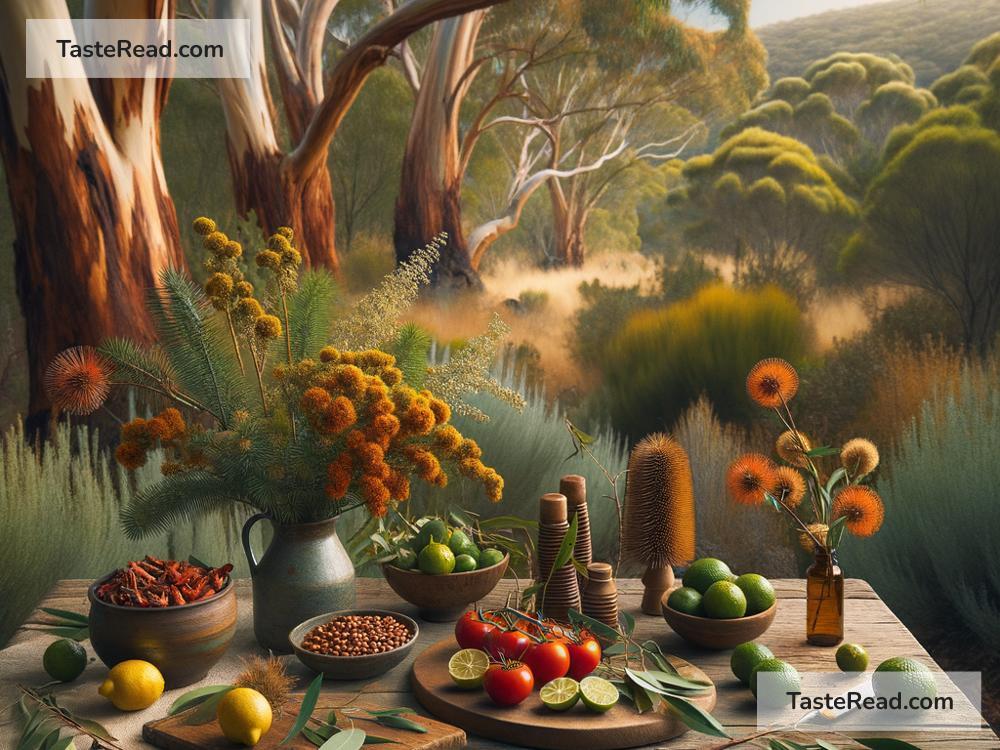The Development of Australian Bush Tucker: A Journey Through Culture and Nature
Australia is known for its unique landscapes, rich Indigenous culture, and fascinating wildlife. But there’s one aspect of Australia that stands out for food lovers: bush tucker. This term refers to native Australian foods—plants, seeds, berries, and meats—that have been part of Indigenous diets for tens of thousands of years. These foods not only carry nutritional benefits but also reflect the deep connection between the land and its people. Over time, bush tucker has evolved and found its place in modern culinary practices, while still honoring the heritage of Indigenous Australians. Let’s explore the development of this remarkable food tradition.
What Is Bush Tucker?
Bush tucker includes any food that comes from Australia’s native flora and fauna. Indigenous Australians used these natural resources for thousands of years to sustain themselves, often harvesting ingredients directly from the land. Unlike regular farming practices that rely on cultivated crops and livestock, bush tucker relies on wild, naturally-growing foods.
Examples of bush tucker include:
– Kangaroo meat
– Witchetty grubs (a type of larva rich in protein)
– Quandongs (a native fruit with a tart flavor)
– Finger limes (a small, citrus fruit bursting with flavor)
– Macadamia nuts (a globally popular nut that originated in Australia)
– Bush tomatoes (a sweet fruit native to dry regions)
– Saltbush (a plant used to season dishes)
Each ingredient has been traditionally used not just as food but often for medicinal or spiritual purposes as well.
Bush Tucker and Indigenous Culture
For Indigenous Australians, bush tucker is not merely food—it’s a way of life. For thousands of years, Aboriginal and Torres Strait Islander peoples developed a deep understanding of their country’s plants and animals. They learned which species were poisonous and which were safe to eat, how to prepare certain foods, and how to find essential water sources in the sometimes harsh Australian bush.
This knowledge was passed down orally through generations, along with stories and songs connected to the land. These traditions are inseparable from the spiritual and cultural beliefs of Indigenous communities. Bush tucker represents their respect for nature and their sustainable approach to using resources. Indigenous Australians knew how to live in harmony with the environment, never taking more than needed and carefully maintaining the ecological balance.
The Impact of Colonization
When Europeans arrived in Australia in the late 18th century, they brought their own farming techniques and food systems. Indigenous food practices were largely ignored, and European settlers introduced crops like wheat, potatoes, and rice, as well as livestock like cows, sheep, and pigs. These imported methods quickly became the foundation of Australia’s food culture, pushing native bush tucker into the background.
As colonization disrupted Indigenous communities and practices, much of their food knowledge was at risk of being lost. Many Indigenous groups were displaced from their lands, making it harder for them to access their traditional food sources. Bush tucker slowly became less prominent and, for many years, was underappreciated in mainstream Australian culture.
Modern Revival of Bush Tucker
In recent decades, there has been a renewed interest in bush tucker, thanks to growing awareness about Indigenous culture, sustainability, and the unique flavors of native Australian ingredients. This revival is happening in homes, restaurants, and research centers across the country.
Bush Tucker in Restaurants
Many chefs in Australia now incorporate bush tucker into their dishes, combining traditional ingredients with modern cooking techniques. For example, kangaroo meat, finger limes, and wattleseed are becoming popular among food enthusiasts looking for authentic Australian flavors. Restaurants proudly showcase these ingredients to celebrate Indigenous heritage.
Bush Tucker Products
Bush tucker is also becoming more accessible with products like native jams, spices, and teas available in stores. Macadamia nuts, a native plant, are now famous worldwide. Similarly, lemon myrtle, a fragrant native herb, is used in sauces, marinades, and desserts.
Cultural Influence
As bush tucker becomes popular, so does the appreciation for Indigenous culture. Schools, community programs, and tours are teaching people about native foods and the knowledge of Aboriginal and Torres Strait Islander peoples. Visitors to Australia are also drawn to bush tucker experiences, learning how these ancient traditions connect food to land, history, and culture.
Sustainability and Environmental Benefits
Bush tucker is also gaining attention for its environmental potential. Native plants, like saltbush and wattleseed, thrive in Australia’s tough climate, meaning they require less water and care than imported crops. This makes them highly sustainable and resilient in the face of climate challenges.
Challenges in Reviving Bush Tucker
While there’s growing support for bush tucker, challenges remain. Many Indigenous communities face barriers in re-establishing traditional food practices, due to land restrictions or economic struggles. Additionally, the push for commercialization sometimes risks prioritizing profits over preserving Indigenous knowledge and culture.
It’s crucial that the promotion of bush tucker respects and benefits Indigenous Australians, ensuring that they are included in decision-making processes and rewarded for their wisdom and contributions.
Conclusion
Bush tucker is far more than food—it’s a symbol of Australia’s incredible biodiversity and the deep cultural connection between Indigenous peoples and their land. While colonization pushed many traditional practices into the shadows, efforts to revive bush tucker are now bringing these traditions back to the forefront. Restaurants, businesses, and cultural programs are shining a light on the rich history and flavors of native ingredients.
As the world becomes more interested in sustainable and authentic food, bush tucker has remarkable potential to grow. It offers not only exciting flavors but a chance to honor the heritage, resilience, and knowledge of Indigenous Australians. Bush tucker is a reminder that some of the best ingredients come directly from the heart of nature.


